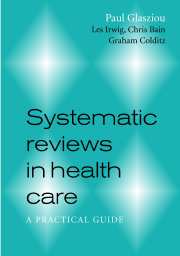10 - Prediction: prognosis and risk
Published online by Cambridge University Press: 01 September 2009
Summary
The question
Prognostic questions generally contain two parts:
the definition of the patient population of interest, e.g. recent-onset diabetes, newly detected colorectal cancer; and
the outcomes of interest, such as morbidity and mortality.
The implicit third part of the usual three-part question is the set of risk factors that have been used for the prediction of prognosis. Chapter 9 looked at a single risk factor, with a particular focus on whether that risk factor was causally associated with the outcome. In this chapter this idea is extended but with a focus on prediction or prognosis for individuals. This chapter should therefore be read in conjunction with Chapter 9 on risk factors but differs in two ways.
Firstly, the principal aim is prediction of outcomes, whether or not the factors are causal. For example, an earlobe crease might be considered a valid marker of cardiovascular disease risk and form a useful part of a risk prediction model, though clearly it is a marker rather than being causal.
Secondly, the combination of multiple factors for prediction will often give better prediction than the single factors considered in Chapter 9 (e.g. Framingham cohort study risk equations for heart disease).
Why should we be interested in prediction?
There are two principal reasons for investigating questions about prediction. Firstly, patients are intrinsically interested in their prognosis, so that they can adapt and plan for their future. Secondly, separation of individuals with the same disease into those at high and low risk may be extremely valuable in appropriately targeting therapy. Generally, those with high risk have more to gain, and hence benefits are more likely to outweigh disadvantages, and also to be more cost-effective.
- Type
- Chapter
- Information
- Systematic Reviews in Health CareA Practical Guide, pp. 102 - 106Publisher: Cambridge University PressPrint publication year: 2001



